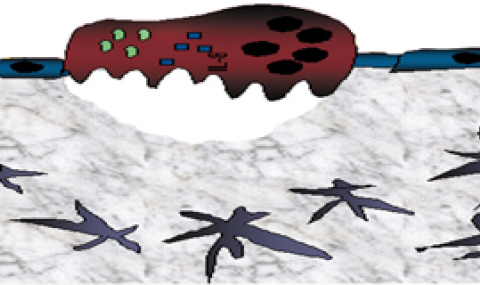Hematopoietic stem and progenitor cells (HSPC) are mostly retained in a quiescent, non-motile mode in the bone marrow (BM), shifting to a cycling, differentiating and migratory state on demand.
How HSC replenish the blood with new mature leukocytes on a daily basis while maintaining a constant pool of primitive cells in the BM throughout life is not clear.
Recently, we reported that the bioactive lipid Sphingosine 1-Phosphate (S1P) regulates HSPC mobilization via ROS signaling and CXCL12 secretion (Golan et al, Blood 2012).
We hypothesize that S1P influences the daily circadian egress of HSPC and their proliferation. We report that S1P levels in the blood are increased following initiation of light at the peak of HSPC egress and are reduced towards the termination of light when circulating HSPC reach a nadir. Interestingly, mice with constitutively low S1P plasma levels due to lack of one of the enzymes that generates S1P (Sphingosine kinase 1), do not exhibit fluctuations of HSPC levels in the blood between day and night.
We report that HSPC numbers in the BM are also regulated in a circadian manner. Unexpectedly, we found two different daily peaks: one in the morning, following initiation of light, which is accompanied by increased HSPC egress and the other at night after darkness, which is associated with reduced HSPC egress.
In both peaks HSPC begin to cycle and differentiate via up-regulation of reactive oxygen species (ROS) however, the night peak had lower ROS levels. Concomitant with the peak of primitive stem and progenitor cells, we also observed (to a larger extent in the night peak), expansion of a rare activated macrophage/monocyte αSMA/Mac-1 population. This population maintains HSPC in a primitive state via COX2/PGE2 signaling that reduces ROS levels and increases BM stromal CXCL12 surface expression (Ludin et al, Nat. Imm. 2012).
We identified two different BM peaks in HSPC levels that are regulated by the nervous system via circadian changes in ROS levels. Augmented ROS levels induce HSPC proliferation, differentiation and motility, which take place in the morning peak; however, they need to be restored to normal levels in order to prevent BM HSPC exhaustion.
In the night peak, HSPC proliferate with less differentiation and egress, and activated macrophage /monocyte αSMA/Mac-1 cells are increased to restore ROS levels and activate CXCL12/CXCR4 interactions to maintain a HSPC primitive phenotype. Additionally, S1P also regulates HSPC proliferation, thus mice with low S1P levels share reduced hematopoietic progenitor cells in the BM.
Interestingly S1P is required more for the HSPC night peak since in mice with low S1P levels, HSPC peak normally during day time but not at darkness. We suggest that the first peak is initiated via elevation of ROS by norepinephrine that is augmented in the BM following light-driven cues from the brain (Mendez-Ferrer at al, Nature 2008). The morning elevated ROS signal induces a decrease in BM CXCL12 levels and up-regulated MMP-9 activity, leading to HSC proliferation, as well as their detachment from their BM microenvironment, resulting in enhanced egress. Importantly, ROS inhibition by N-acetyl cysteine (NAC) reduced the morning HSPC peak. Since norepinephrine is an inhibitor of TNFα, upon light termination norepinephrine levels decrease and TNFα levels are up-regulated. TNFα induces activation of S1P in the BM, leading to the darkness peak in HSPC levels. S1P was previously shown also to induce PGE2 signaling, essential for HSPC maintenance by the rare activated αSMA/Mac-1 population. Indeed, in mice with low S1P levels, we could not detect a peak in COX2 levels in these BM cells during darkness.
We conclude that S1P not only induces HSPC proliferation via augmentation of ROS levels, but also activates PGE2/COX2 signaling in αSMA/Mac-1 population to restore ROS levels and prevent HSPC differentiation and egress during the night peak.
We hypothesize that the morning HSPC peak, involves proliferation, differentiation and egress, to allow HSPC to replenish the blood circulation with new cells. In contrast, the second HSPC night peak induces proliferation with reduced differentiation and egress, allowing the renewal of the BM HSPC pool. In summary, we identified two daily circadian peaks in HSPC BM levels that are regulated via light/dark cues and concomitantly allow HSPC replenishment of the blood and immune system, as well as maintenance of the HSPC constant pool in the BM.



